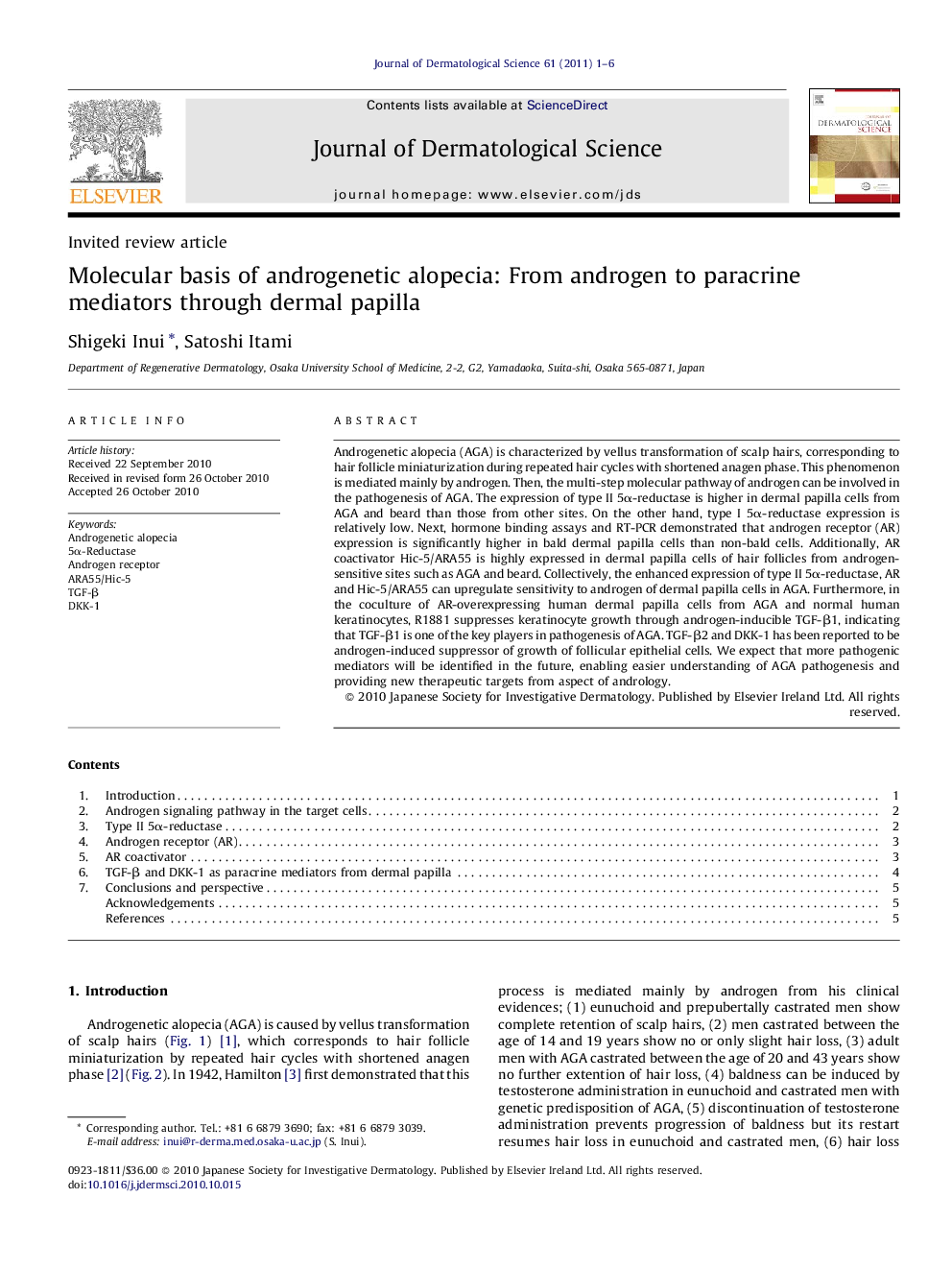| Article ID | Journal | Published Year | Pages | File Type |
|---|---|---|---|---|
| 3213618 | Journal of Dermatological Science | 2011 | 6 Pages |
Androgenetic alopecia (AGA) is characterized by vellus transformation of scalp hairs, corresponding to hair follicle miniaturization during repeated hair cycles with shortened anagen phase. This phenomenon is mediated mainly by androgen. Then, the multi-step molecular pathway of androgen can be involved in the pathogenesis of AGA. The expression of type II 5α-reductase is higher in dermal papilla cells from AGA and beard than those from other sites. On the other hand, type I 5α-reductase expression is relatively low. Next, hormone binding assays and RT-PCR demonstrated that androgen receptor (AR) expression is significantly higher in bald dermal papilla cells than non-bald cells. Additionally, AR coactivator Hic-5/ARA55 is highly expressed in dermal papilla cells of hair follicles from androgen-sensitive sites such as AGA and beard. Collectively, the enhanced expression of type II 5α-reductase, AR and Hic-5/ARA55 can upregulate sensitivity to androgen of dermal papilla cells in AGA. Furthermore, in the coculture of AR-overexpressing human dermal papilla cells from AGA and normal human keratinocytes, R1881 suppresses keratinocyte growth through androgen-inducible TGF-β1, indicating that TGF-β1 is one of the key players in pathogenesis of AGA. TGF-β2 and DKK-1 has been reported to be androgen-induced suppressor of growth of follicular epithelial cells. We expect that more pathogenic mediators will be identified in the future, enabling easier understanding of AGA pathogenesis and providing new therapeutic targets from aspect of andrology.
